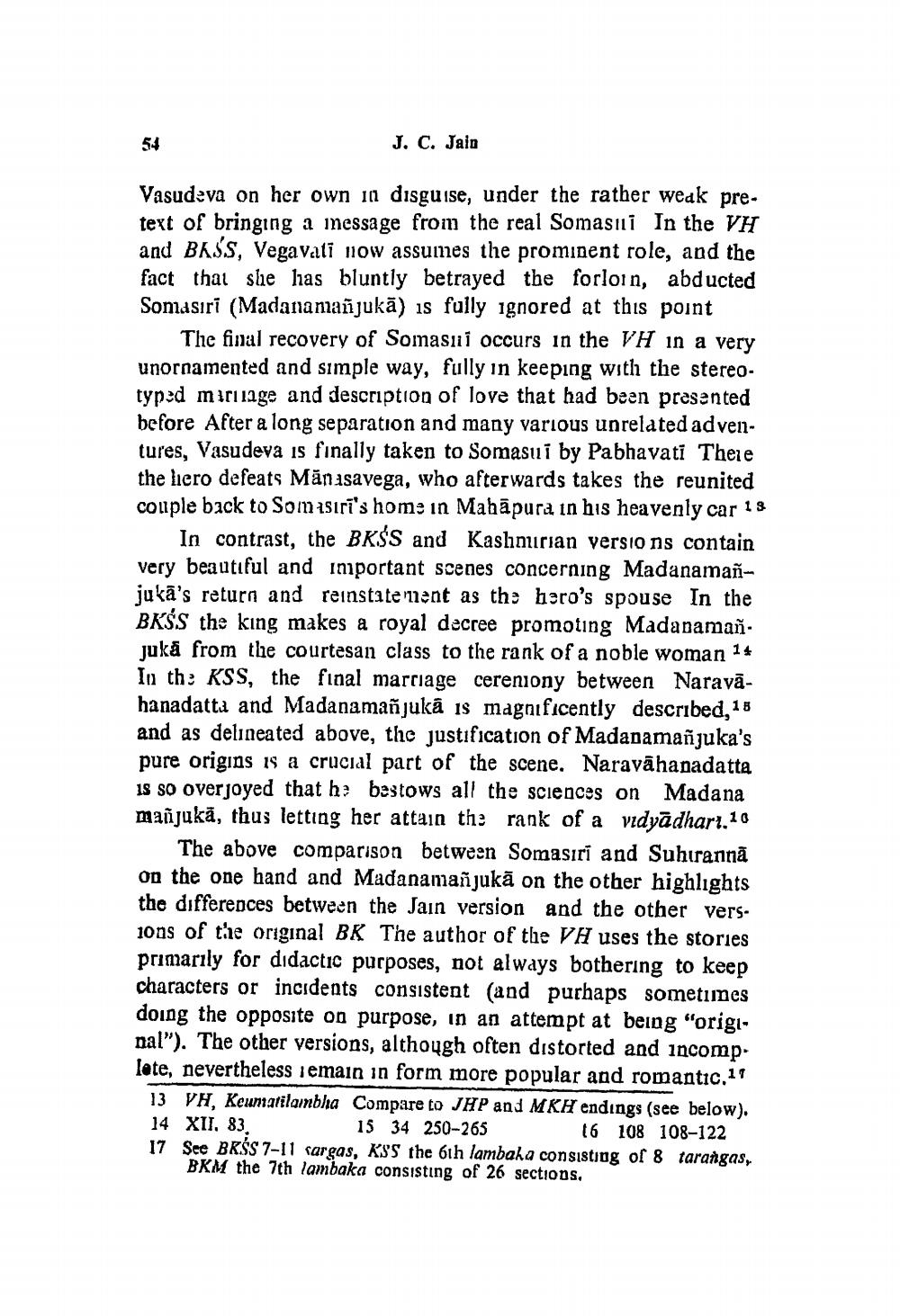________________
J. C. Jain
Vasudeva on her own in disguise, under the rather weak pretext of bringing a message from the real Somasii In the VH and Bass, Vegavati now assumes the prominent role, and the fact that she has bluntly betrayed the forloin, abducted Somasiri (Madananañjukā) is fully ignored at this point
The final recovery of Somasni occurs in the VH in a very unornamented and simple way, fully in keeping with the stereotyped mirnage and description of love that had been presented before After a long separation and many various unrelated adventures, Vasudeva is finally taken to Somasu i by Pabhavati There the liero defeats Manisavega, who afterwards takes the reunited couple back to Som siri's home in Mahāpura in his heavenly car 13
In contrast, the BKSS and Kashmurian versions contain very beautiful and important scenes concerning Madanamanjukā's return and reinstatenent as th: hero's spouse In the BKSS the king makes a royal decree promoting Madapamañ juka from the courtesan class to the rank of a noble woman 14 In th: KSS, the final marciage cereniony between Naravāhanadatta and Madanamañjukā is magnificently described, 18 and as delineated above, the justification of Madanamañjuka's pure origins is a crucial part of the scene. Naravāhanadatta is so overjoyed that hz bestows all the sciences on Madana manjukā, thus letting her attain th: rank of a vidyādhar1.10
The above comparison between Somasiri and Suhirannā on the one hand and Madanamañjukā on the other highlights the differences between the Jain version and the other vers10ns of the original BK The author of the VH uses the stories primarily for didactic purposes, not always bothering to keep characters or incidents consistent (and purhaps sometimes doing the opposite on purpose, in an attempt at being "original"). The other versions, although often distorted and incomplate, nevertheless remain in form more popular and romantic. 11
13 VH, Keumatilambha Compare to JHP and MKH endings (see below). 14 XII, 83 15 34 250-265
16 108 108-122 17 See BRŚS 7-11 sargas, KS'S the 6th lambaha consisting of 8 tarangas,
BKM the 7th lambaka consisting of 26 sections,




